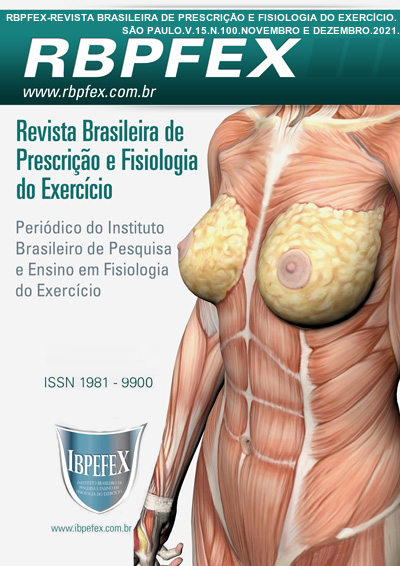Influence of circadian rhythm on performance and physical capacities of crack auto model pilots
Abstract
Introduction: It is known that the circadian rhythm influences physical performance, and the daily oscillations of human performance in different sports are relatively well defined. However, there are no studies regarding the influence of the biological clock on the performance of slot car modelers. Objective: To verify and compare the performance, reaction time and handgrip strength of Model Slot Car pilots during different times of the day. Materials and Methods: Seven volunteers were evaluated, using specific tests to quantify the performance during the practice of Slot Car Racing, the reaction time test and handgrip strength. The tests were carried out at 09:00 and 17:00.. Results: Descriptively, it was found that at 17:00 the pilots presented superior performance at 09:00. That is, they covered an 8% greater distance and the best lap was 2.5% faster. On the other hand, reaction time was 20% better in the afternoon. However, in relation to handgrip strength, there was no change between times of day. The correlation between distance covered and best lap was r = -0.98 at 9 am and r = -0.93 at 5 pm. As for distance and strength r = 0.51 and r = 0.71 and between strength and best lap r = -0.75 and r = -0.99 at 9 am and 5 pm respectively. Bottom line: The performance and reaction time of the Rift Motorsport drivers were descriptively better at 17:00. On the other hand, regardless of the time of day, there was a strong correlation between the distance covered and the best lap in the tests, as well as between the handgrip strength and the performance in Slot Racing.
References
-Atkinson, G.; Reilly, T. Effects of age and time of day on preferred work rates during prolonged exercise. Chronobiol. Int. Vol.12. Num.2.1995. p.1221-34.
-Barros, M.V.G.; Reis, R.S. Análise de dados em atividade física. Londrina: Midiograf. 2003.
-Baxter, C.; Reilly, T. Influence of time of day on all-out swimming. Br.J.Sports Med. Vol.17. Num.2. 1983. p.122-7.
-Callard, D.; Gauthier, A.; Maffiuletti, N.; Davenne, D; Van Hoecke, J. Circadian fluctuations in the muscular efficiency of athletes: with sleep versus sleep deprivation. J. Soc. Biol. Vol. 194. Num.3-4. 2000. p.165-9.
-Gauthier, A.; Callard, D.; Maffiuletti, N.; Davenne, D.; Van Hoecke, J. Diurnal rhythm of the muscular performance of elbow flexors during isometric contractions. Chronobiol. Int. Vol. 13. Num.2. 1996. p.135-46.
-Golombek, D. Mecanismos de temporização em vertebrados. In: Marques, N.; Menna-Barreto, L. (eds) Cronobiologia: Princípios e aplicações. São Paulo. Edusp. 1997.
-Hall, J. E. Tratado de fisiologia médica. Rio de Janeiro: Guanabara Koogan. 2017.
-Ghattassi, K.; Hammouda, O.; Graja, A. Morning melatonin ingestion and diurnal variation of short-term maximais performances in soccer players. Physiol Int. Vol. 103. Nume.1. 2016. p.94-104.
-Katzenberg, D.; Young, T.; Finn, L.; King, L.; Takahashi, J.S.; Mignot, E. A Clock polymorphism associated with human diurnal preference. Sleep. Vol. 21. Num.6. 1998. p. 569-76.
-Marins, J.C.B.; Giannichi, R.S. Avaliação & Prescrição de atividade física: guia prático. Rio de Janeiro: Editora Shape. 2003.
-Ministério da Saúde/Fundação Nacional da Saúde. Informe Epidemiológico do SUS. Vol. 3 Num.2. 1996.
-Reilly, T. Human circadian rhythms and exercise. Crit. Rev. Biomed. Eng. Vol. 18. Num.3. 1990. p. 165-80.
-Schleicher, R. Slot Car Racing: Tips, Tricks & Track Plans. Motorbooks. 2005.
-Squarcini, C.F.; Pires, M.L.; Lopes, C. Free-running circadian rhythms of muscle strength, reaction time, and body temperature in totally blind people. Eur J Appl Physiol. Vol.113. Num.1. 2013. p. 157-165.
-Oliveira, J. Medição de tempo de reação como fator de motivação e de aprendizagem significativa no laboratório de física. Cad. Cat. Ens. Fís. Vol. 15. Num. 3. 1998. p. 301-307.
-Smith, R. S. Circadian rhythms and enhanced athletic performance in the National Football League. Sleep. Vol. 20. Num.5. 1997.p. 362-5.
-Thomas, J. R; Nelson, J. K. Research methods in physical activity. 3ª edição. Champaign: Human Kinetics. 1974.
-Tonalezzi, C. A Day at the Slot Car Races. Slot Car Superstar. 2018.
-Tortora, G.J.; Grabwski, S.R. Princípios de Anatomia e Fisiologia. Rio de Janeiro. Guanabara Koogan. 2016.
-Winget, C .M. Circadian rhythms and athletic performance. Med.Sci.Sports Exerc. Vol. 17. Num. 5. 1985. p.498-51.
Copyright (c) 2022 Sandro Augusto Rosa, Victor Augusto Ramos Fernandes, Marcelo Conte

This work is licensed under a Creative Commons Attribution-NonCommercial 4.0 International License.
Authors who publish in this journal agree to the following terms:
- Authors retain the copyright and grant the journal the right of first publication, with work simultaneously licensed under the Creative Commons Attribution License BY-NC which allows the sharing of the work with acknowledgment of the authorship of the work and initial publication in this journal.
- Authors are authorized to enter into additional contracts separately for non-exclusive distribution of the version of the work published in this journal (eg, publishing in institutional repository or book chapter), with acknowledgment of authorship and initial publication in this journal.
- Authors are allowed and encouraged to post and distribute their work online (eg, in institutional repositories or on their personal page) at any point before or during the editorial process, as this can bring about productive change as well as increase impact and impact. citation of published work (See The Effect of Free Access).






